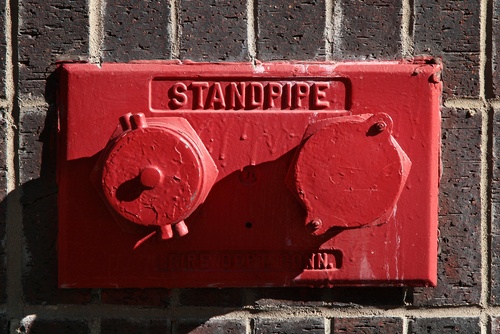Having said that many fire departments carry multiple hose packs.
Standpipe 30 ft access to roof.
The 30 ft throw cannot reach the floor area inside the office unless the hose nozzle reaches the door.
It requires a class iii standpipe be installed throughout buildings where the floor level of the highest story is located more than 30 ft above the lowest level of fire department access or where the lowest floor level is located more than 30 ft below the highest level of fire department vehicle access.
Class iii standpipe systems shall be installed throughout buildings where the floor level of the highest story is located more than 30 feet 9144 mm above the lowest level of fire department vehicle access or where the floor level of the lowest story is located more than 30 feet 9144 mm below the highest level of fire department vehicle access.
In buildings four or more stories or more than 40 feet 12 192 mm in height above grade one stairway shall extend to the roof surface through a stairway bulkhead complying with section 1509 2 unless the roof has a slope steeper than 20 degrees 0 35 rad access to setback roof areas may be through a door or window opening to the roof.
If that is the case the ahj could reasonable accept ignoring the walls since they know that application of the 100 ft plus 30 ft throw provides spacing well within the ability.
The code specifically states in f 905 3 1 height.
Standpipe systems are divided into classes to identify their specific function.
The international fire code states that a class iii standpipe system shall be installed throughout buildings where the floor level of the highest story is located more than 30 feet above the lowest level of fire department access or where the floor level of the lowest story is located more than 30 feet below the highest level of fire department access.
Stairs terminating at the level of a setback shall.
Prior to 1993 the minimum allowable residual pressure pressure when water is flowing was 65 psi at the most remote outlet usually the roof.

